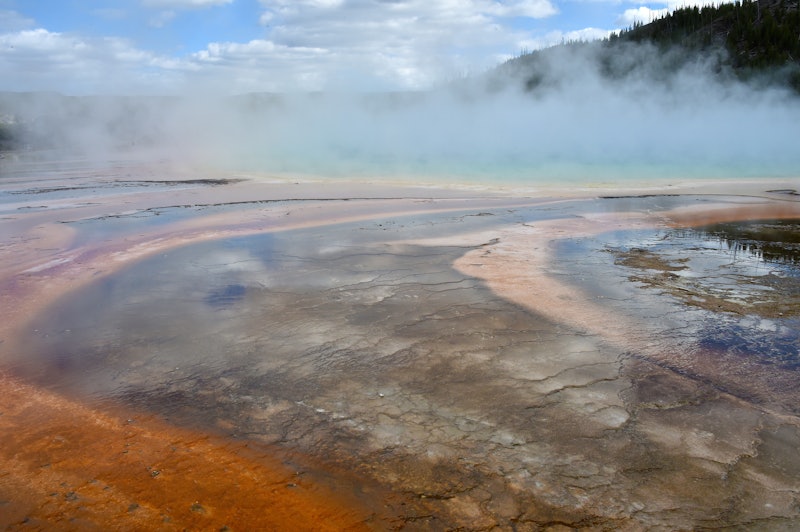News
Is Yellowstone About To Blow?
On Sunday, a 4.8-magnitude earthquake struck Yellowstone National Park. That normally wouldn’t be considered a very powerful quake, but it was the biggest to hit the park in over 30 years. Shortly thereafter, video hit the Internet of a herd of buffalo fleeing the park. Which got some curious (and freaked out) observers asking: Is Yellowstone about to blow?
The answer, most likely, is no. While the national park sits atop one of the biggest supervolcanoes in the world, it only experiences a “violent eruption” — that is, the kind that warrants widespread panic and possibly moving to another continent — once or twice every two million years.
Only three such eruptions have been documented in the last two million years, the most recent one having taken place around 640,000 years ago, and most scientists don’t expect it to blow anytime within our lifetimes. In another million years or so, we can begin to worry.
The United States Geological Survey is very clear about the likelihood of Yellowstone blowing top. In a blog post, the agency stressed two points: One, that it’s impossible to predict a pattern based on only two intervals (“It would be statistically meaningless”); and two, that even if we ignore that point and try to make a prediction anyway, the resulting prediction is that Yellowstone won’t blow up for another 90,000 years or so.
When Yellowstone does blow up, however, it’ll be catastrophic on an almost apocalyptic level. Everything within a 100-mile radius will be obliterated. The entirety of North America and Canada will be covered in multiple inches of ash, and the nation’s food and water supplies will be seriously damaged or destroyed. So, that’s nightmarish.
But the recent events aren’t not as worrisome as they seem. In the pantheon of tectonic plate movement, a 4.8-magnitude quake is considered a tremor, and it’s within the historical trend for Yellowstone. As far as the bison “running for their lives,” as one video puts it, that’s just regular old migration, which is expected this time of year, and that video was most likely filmed weeks before the explosion.
But the USGS, which apparently didn’t want anyone to become too complacent, added that “we cannot discount the possibility of another such eruption occurring some time in the future.” Good luck falling asleep tonight.
